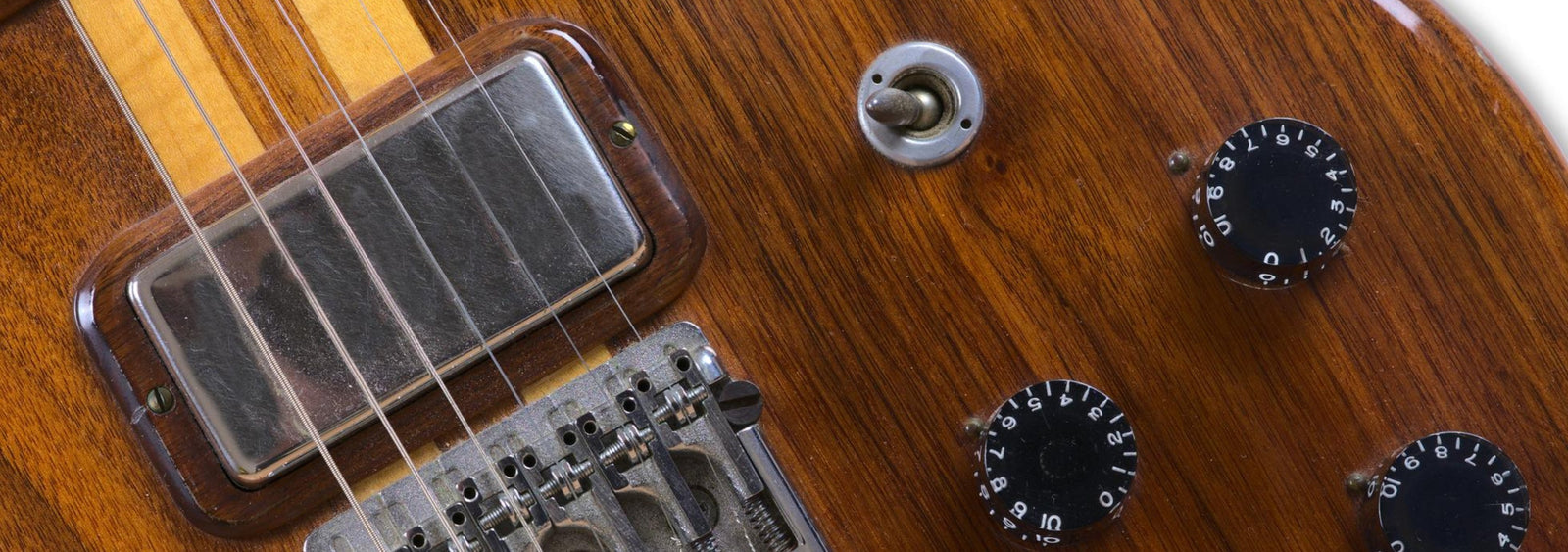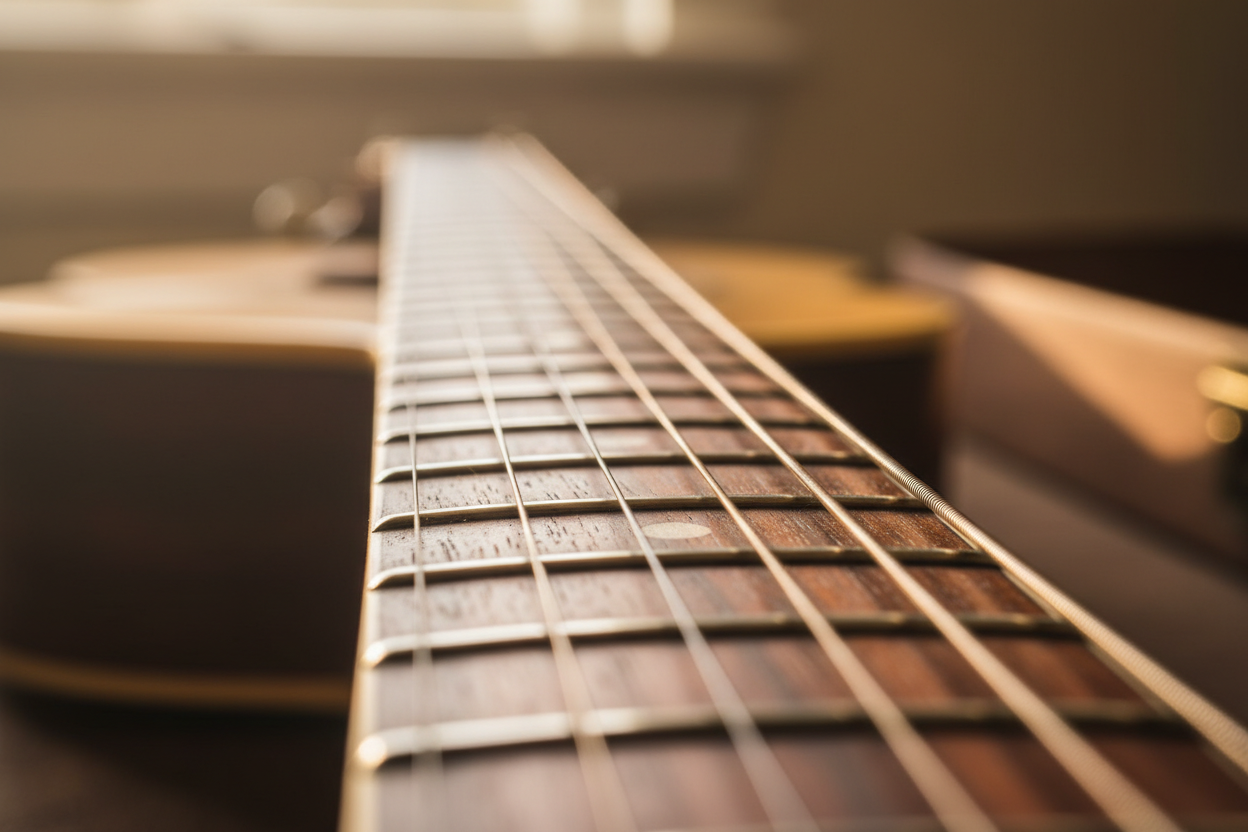Though every part of the guitar affects and contributes to the end sound (even the wood, in subtle ways), the pickups are where the electric magic begins. They are the medium by which the sound turns into a signal, and the way the particular set of pickups do their job will mostly affect the sound at the other side of the amp.
Technically, there’s no limit to what they can pick up, and this is where the fine art of what to process and what to leave behind begins. Too sensitive, and your tone will be overwhelmed by the noise. On the other hand, what the pickups don’t pick will be left out and won’t make it to the speaker (unless you are using effects that add something to your sound). Here are 7 things you should know about your current and future pickups.
How do pickups work?
Pickups are magnets. Magnets like to mess with electricity, and vice versa. So just as you put an electric signal into a speaker that also has a magnet and the signal distorts the magnetic field introducing vibrations that create the sound, pickups do the opposite thing.
When you pick a string on an electric guitar, it vibrates and produces a faint tone. If the string is close enough to a magnet, you can create vibrations in the magnetic field that produce a faint electric signal. If you send this signal to an amp, it’s reproduced just as it’s been caught by a magnet. The faster vibrations are, the higher the pitch. Magnets can get more from the string; this is what we call the tone, the color of the guitar sound.
What types of pickups are there?
Let’s quickly drop a list of available and most common pickups on the market.
Single coils: To produce a magnet for this purpose, all you need is a coil of thin wire wrapped a large number of times. Single coils are the bread and butter of Fender guitars. Fender combines up to three pickup lines to catch the desired tone of a string. As a result, the sound is bright and clear, leaning to high-end frequencies, and leans toward being loud and crunchy.
Humbuckers: Some players didn’t want their sound to be as crystal and were annoyed by the hum single coils make when not playing and overdrive applied. Hence the humbuckers. Adding another coil in the opposite direction introduces signal cancellation that can be used to our advantage. The sound is more present when played, a little dimmer, and more suitable for lower tone playing, perfected by Gibson.

P-90: Wider than a single-coil pickup, they sit between singles and humbuckers, capable of delivering both bright and heavy tones without sounding too pinchy or undefined.

Active pickups: A new era has brought a new type of pickup – a plate of an active magnet with its power source capable of picking more subtleties across the scale, especially useful for the lower notes. The drawback is switching batteries, and the biggest pro is that shredding riffs sound wicked.
----------------------------------------------------------------------------------------------------------------------------------------------Does higher output give clearer sound or just louder?
Output is more a matter of amp than pickups, though it is true that pickups do different things to a higher volume in amps. Single coils will sound snappy and pick much more side noise (passing fingers over wires etc.). While humbuckers are more controlled, there can be more unwanted buzz and emphasis on mid frequencies, so everything sounds a little off.
What is impedance and what does it do?
Making a guitar sound nice is not that easy, there are factors to count in. One of these factors is that the electric signal travels differently for different frequencies. For this reason, your guitar should have some form of resistance to compensate and control the various frequencies. Impedance is a term that refers to what frequencies are cut off the signal due to resistors in guitar pots.
What’s the difference between 250k and 500k pots?
The difference between the two is like the difference between peanut butter and maple syrup. You’ll probably add PB to J on a slice of bread and pour the wood-juice onto pancakes. The pots are similar. Depending on your pickup, you’ll use different resistance on your pot. The more resistance, the more of the high frequency, so high-gauged pots (like 500K) are usually added to humbucking pickups to make them sound brighter, while lower resistance (around 250k) is added to single coils for a little bit of added warmth.
Are active pickups better than passive pickups?
If active pickups are simply all-around better than the passives, we wouldn’t have the passives. Active pickups increase the output signal from the bat and allow for more control over the tones that are processed. However, this control is far from dynamic enough to replace the traditional passive pickups. This is why many guitar players still resort to passives, as their innate ability to pick what’s there within the range they’re working gives more space to dynamic playing and dosing your notes. In addition, active pickups often (but not always) can consistently manufacture the same sound, which is suitable for some genres but not as good for the blues, funk, traditional styles of jazz, rock, etc.
What do magnet types do to the sound?
When getting new pickups or checking the ones you’ve got, you should know a thing or two about the magnets that were used. The most common magnet types today are the following:
- Alnico (Aluminum, Nickel, Cobalt) + iron magnets are among the most common magnets. Gradients for alloy types go from 1 to 10, and the number generally reflects how strong a magnet is. The stronger the magnet is, the more high-frequency sounds it catches, and vice versa – it’s good to imagine how “tight” a magnet field is.
- Ceramic magnets also contain iron in the form of some lead-iron oxide combination with added barium and strontium, which are strong and cheap to produce. The attack is highly articulate due to crisp and crystal treble.
Conclusion
So, what to make of all this information? How to choose the right pickup for your guitar or a guitar with the right pickup? Basically, it boils down to the quality of pickups and determining the type of pickup so that you can nail the general direction of the sound preference you want.
If you like a darker tone, you can go with humbuckers.
Metal with precise shredding as a playing style? You can consider active pickups with active magnets. Humbuckers work great with overdrive and appear more responsive and snappy using the effect, turning it on with every attack and bringing the noise down more and quicker when muting the strings.
If you want to go with a clear and brighter tone, you can think of using single coils or try and find some brighter P-90 for balance. P-90 is great as a hybrid when it comes to the brightness/dimness of the sound and it better prevents any side noise. Wah sounds great with both single coils and active pickups while overdrive feels more spread between the notes with more options for a background hum even when not playing.
To choose the right tone for yourself, it’s also recommended to check what pickups your favorite players use and go with them. For example, Hendrix liked the Stratocaster with single coils while Mark Knopfler often used humbuckers. You can hear P-90 listening to Jeff Beck, David Gilmour, and, surprisingly, Dave Murray of Iron Maiden.
Written by Marko Jovanovic






